Table of Contents
- Interview with Rochelle Dickerson
- Interview with TY DESIGN
- Selected Poetry by Beth Brown Preston
- Meet Nyala Blue
- Interview with Godshand Owusu-Appiah
- Meet Alauna Mobley
- Interview with Nat Orr
- Meet Jerry Jordan
- Interview with Masela Nkolo
- Wolf-Like Teeth by Tayler Simon
- Meet Ariana Ragsdale
- Interview with Ashley R. Smith
- Temporary Love by Vernajh Pinder
- Interview with Just J. Art
- Interview with Jalen Law
- Message from a Neurodivergent Colorful Woman by Traci Neal
- Interview with Honey the Artist
- Interview with Shannon Scates
- Meet Brianne Moore
- Meet Leavon Bowman
Interview with Godshand Owusu-Appiah
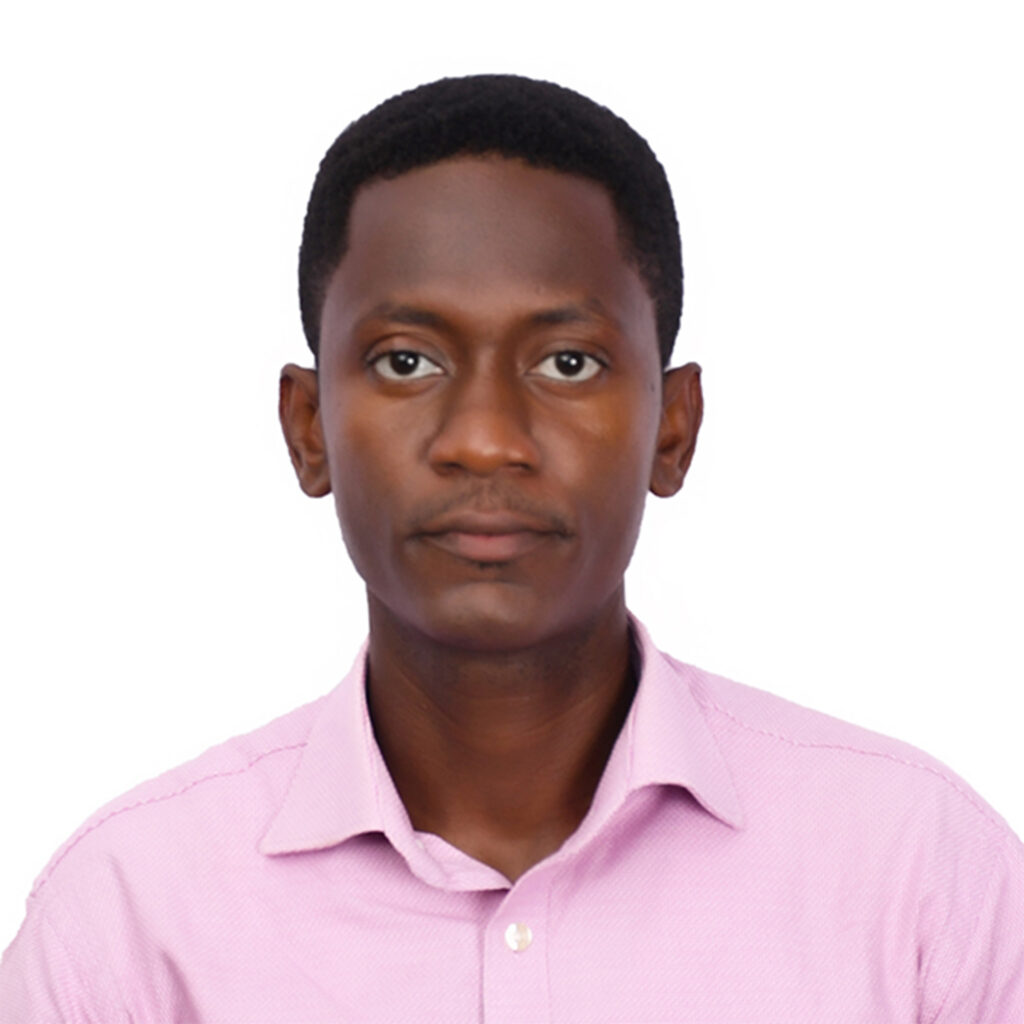
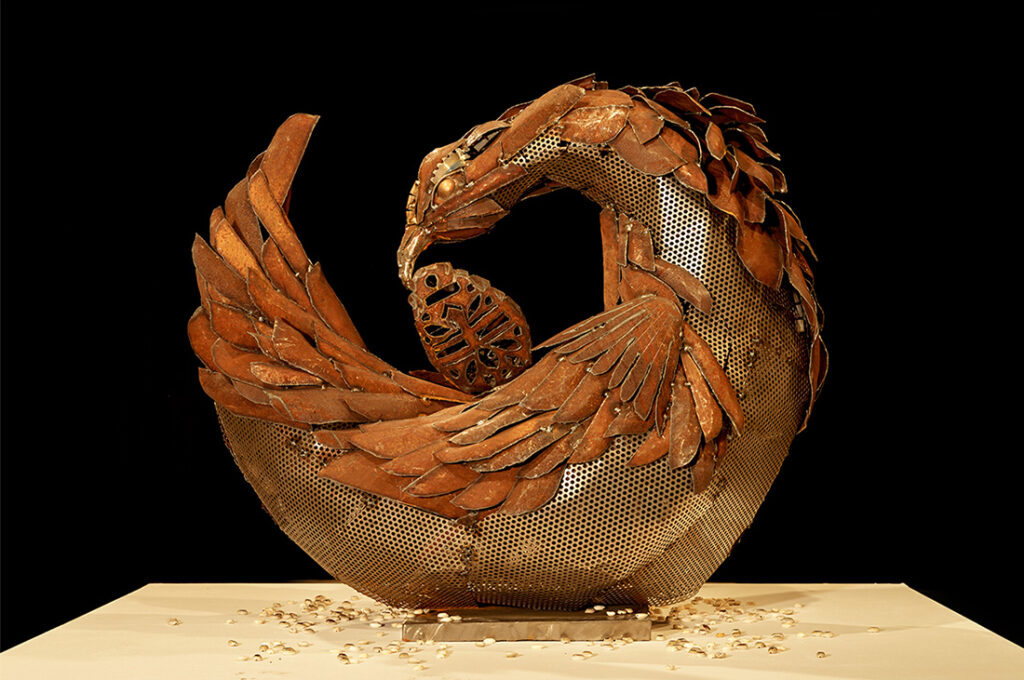
Godshand Owusu-Appiah, Sankofa-Lized Phoenix, 2024, Rusty Scraps, Steel Pipes, and Perforated Steel Sheet
Godshand spent his childhood days in the southern part of Ghana, Cape Coast, and later moved to the capital Accra. He studied Industrial Art (Metals) for his undergraduate degree and pursued a master’s degree at the Kwame Nkrumah University of Science and Technology, also known as Knust in Kumasi, Ghana. Currently, Godshand is a master’s degree candidate in fine art at the Herberger Institute of Art and Design at Arizona State University. He is an instructor of record at ASU and the recipient of a Donald Rabiner Foundation Scholarship for a Digital Stone residency in Italy.
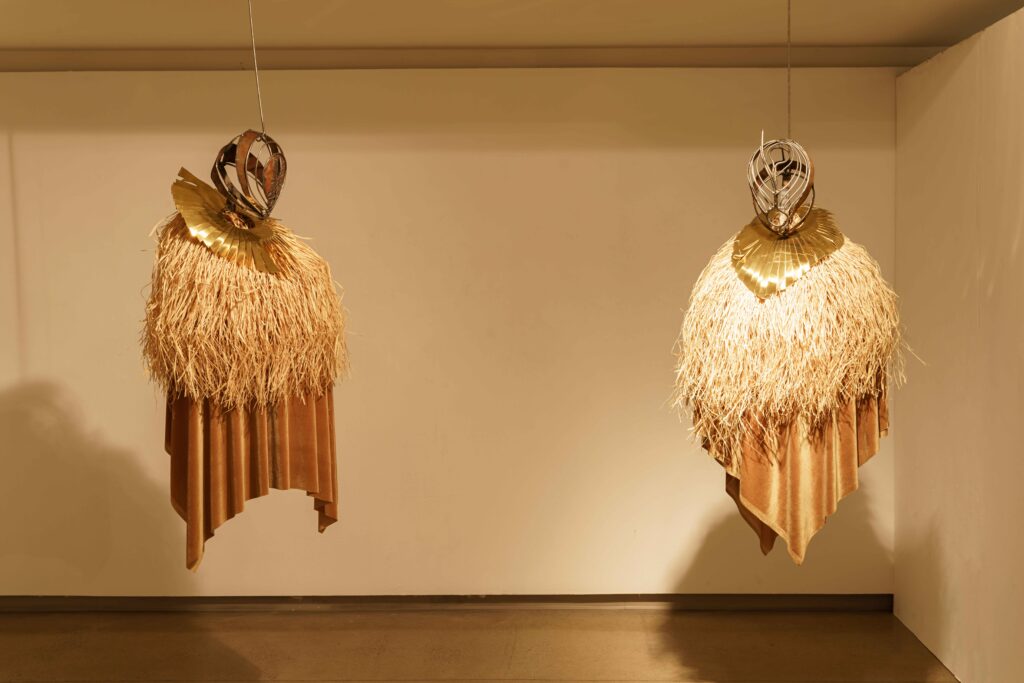 Godshand Owusu-Appiah, Cowrie Heads, 2024, Brass Sheet, Rusty Scraps, Steel Pipes, Perforated Steel Sheet, and Raffia Grass
Godshand Owusu-Appiah, Cowrie Heads, 2024, Brass Sheet, Rusty Scraps, Steel Pipes, Perforated Steel Sheet, and Raffia Grass
In our current world, the drive for technological advancement and sustainability often overlooks deeply rooted human values. Despite promises of enhancing our lives, technology may weaken our human connections and experiences. As an artist, I foresee a future where traditional sources of joy and community are threatened by our relentless pursuit of a technology-driven utopia.
My childhood memories of our well-maintained environments and strong ties within the Ghanaian communities have inspired me to pursue a call for balance in this direction. Based on this inspiration, I emphasize the need to balance contemporary and traditional values through symbolized totems using metal sculptures that fuse old and new materials through the welding technique.
My metal sculptures are the symbolism of the Ghanaian Sankofa which in the Twi language means “to retrieve” or literally “go back and get it,” referencing a return to ancestral values. The Sankofa-lized phoenix bird also references the Bono Adinkra symbol of a stylized bird with its face turning back, as well as the mythical phoenix bird rising from the ashes, underscoring the importance of learning from ancestral experiences and embracing renewal.
Through the fusion of rusty metal scraps and new metals, I aim to inspire the current generation to integrate ancestral values into their lives, echoing the Ghanaian proverb “Sankofa,” which urges us to learn from the past. Among this charged-up body of work is the cowrie shell. Historically used to represent human worth (6,370 cowrie shells was the price for an adult slave), in my artistic endeavors these shells seek to amplify the significance of human values.
In summary, I deem it essential to reconnect with nature and the timeless values that have sustained us for centuries amidst modern complexities.
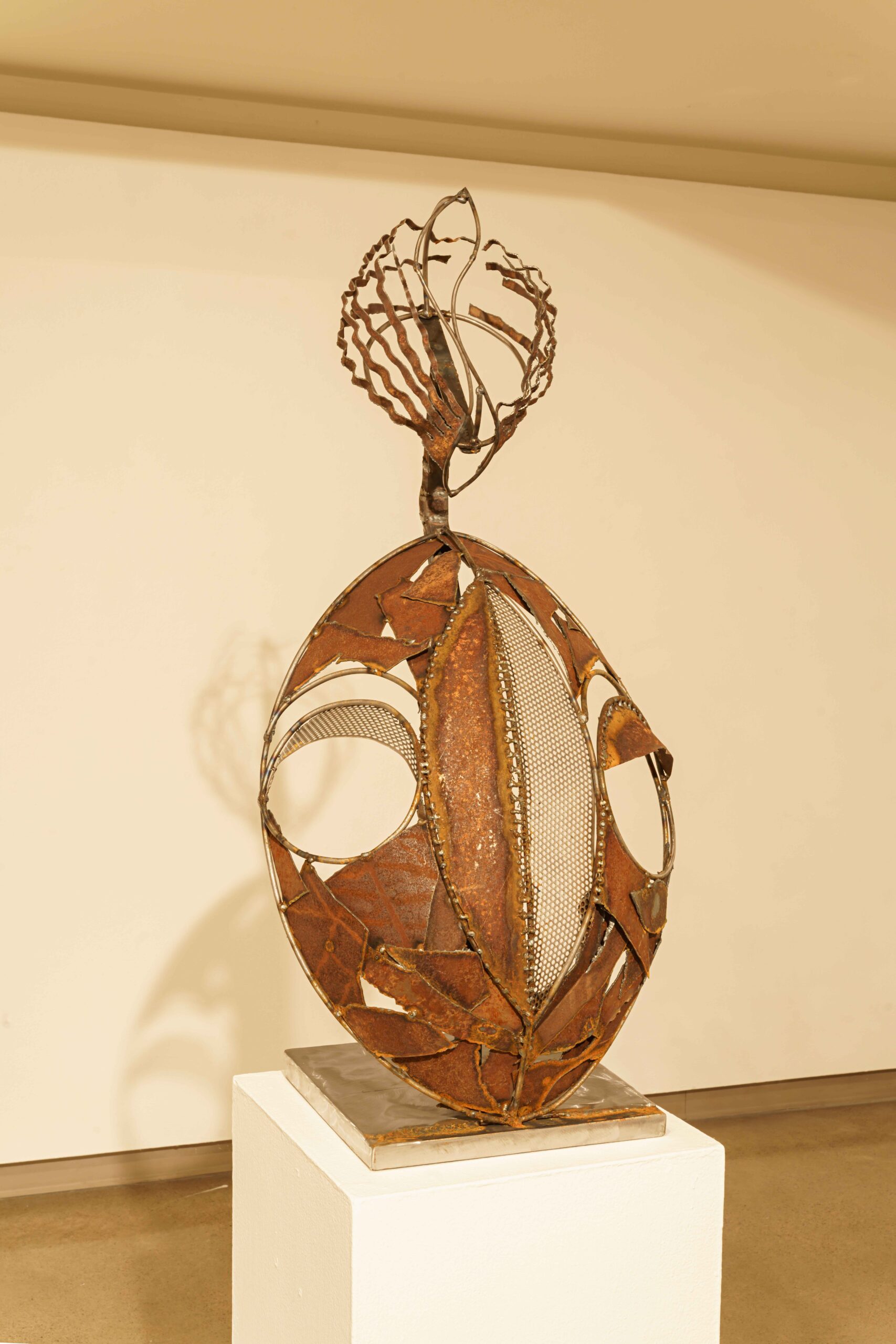
Read our interview below to get a glimpse into Godshand Owusu-Appiah’s creative journey.
How did you discover metalsmithing as an art form? What were your early artistic influences?
While I have dabbled in various art practices, metalsmithing holds a special place in my heart. Introduced to it during my undergraduate years, I have always been intrigued by the distinction between precious and base metals. This curiosity led me to merge these metals into singular pieces, aiming to provoke contemplation about how we value the potential of humanity in our contemporary society.
Initially drawn by the aesthetics of the metal combination, I later realized its potential for conveying a message of balance between traditional and contemporary values. Influenced by the boundary-pushing sculptures of Alexander Calder and the storytelling craftsmanship of Nigerian scrap metal artists Dotun David Popoola and Jonathan Imafidor, I have been inspired to explore metalsmithing’s techniques and possibilities further in my own work.
Your work raises awareness of the societal implications of technological advancement. What do you hope to teach your audience regarding this subject and how do you do so through your work?
Through my work, I aim to throw more light on the societal impacts of technological advancement and prompt reflection on its side effects among my audience. I try to educate them about the complexities surrounding this subject, encouraging them to consider the balance between both traditional and contemporary values in technological advancements.
One way I achieve this is by incorporating fresh and rusty metals into my mythical symbolic sculpture, thus provoking thought among viewers to contemplate the intersection of past, present, and future technological advancement. Through this juxtaposition, I hope to emphasize the importance of balancing traditional and contemporary values of technological innovation.
To engage my audience in conversation, I deliberately expose the welded joints in my finished sculptures, symbolizing the fusion of these two realms. My key objective is to stimulate critical thinking and cause meaningful discussions about the impact of technology on our society and culture.
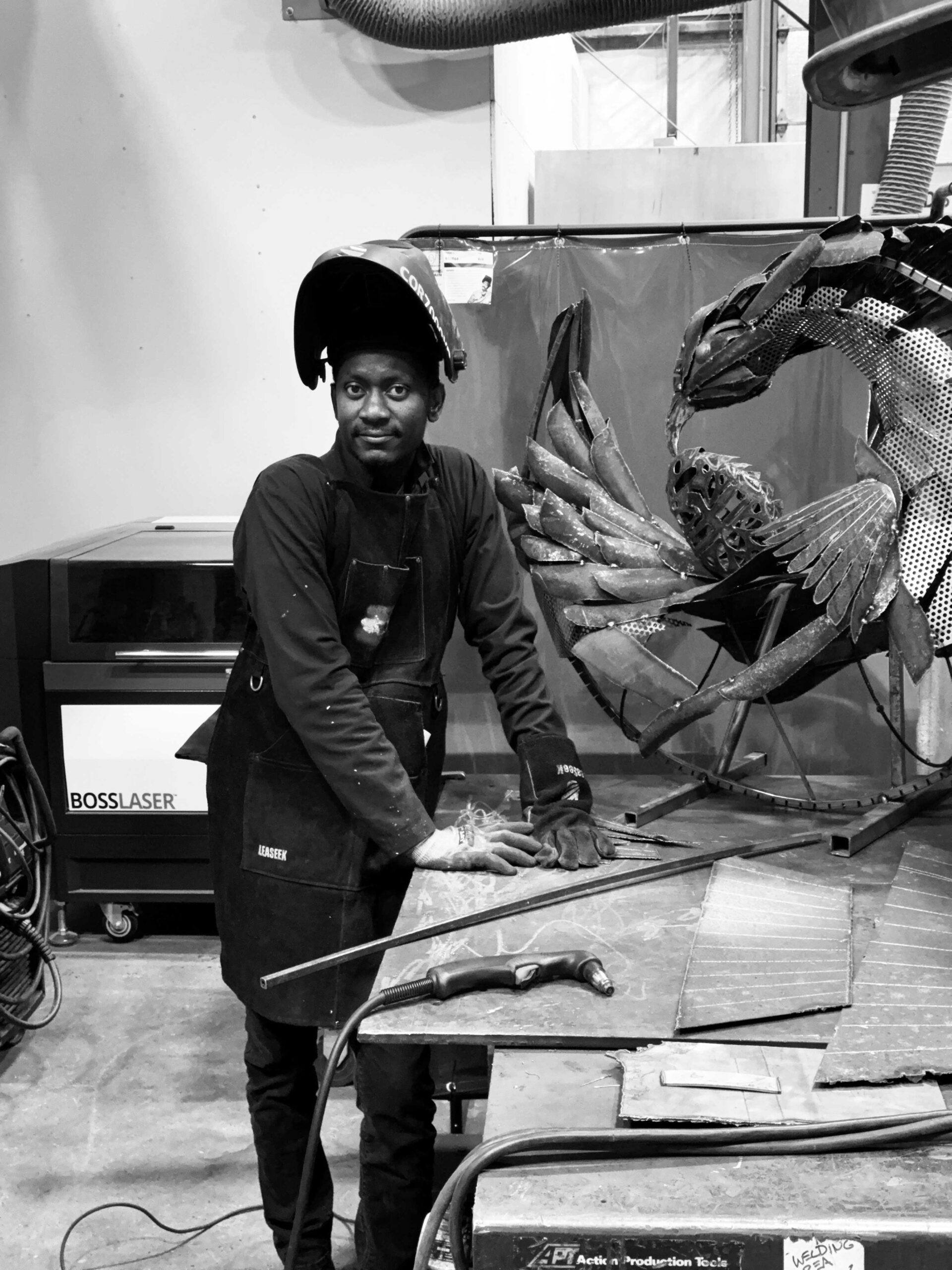
Are there any new mediums, techniques, or concepts you’re eager to explore in the coming years?
In the coming years, I envision my artistic practice evolving in several exciting directions. One avenue I am eager to explore is the integration of emerging technologies into my mythical public sculpture. I see a potential in experimenting with interactive elements, such as incorporating sensors that bring these sculptures alive when one encounters them.
Additionally, I’m keen to delve deeper into combining scrap metals with unconventional mediums such as found objects, fashioning them into wearable body adornment. This exploration will not only broaden the aesthetic possibilities of my work but also deepen its conceptual depth of the potentialities of worthless things in society.
Furthermore, I aspire to expand my thematic exploration beyond the societal impacts of technological advancement to encompass broader social and environmental issues. By addressing topics such as sustainability, inequality, and cultural identity, I aim to engage with pressing contemporary concerns and stimulate critical dialogue.
I see my artistic practice evolving into a multidisciplinary approach that blends traditional craftsmanship with contemporary technologies and diverse mediums.
Do you have any barriers to being an artist? If so, how do you address them?
As a fine artist, one of the most important things I consider is the understanding and acceptance of my concept by our contemporary world. It is sometimes hard for our technologically advanced society to accept the need for balance when technology promises a utopian world.
My financial constraints have been the limitation preventing me from moving my sculpture around the city for exhibitions or promoting my work as and when I want. To address this challenge, I actively seek out grants, residencies, and other funding sources to support my artistic endeavors. I also explore cost-effective alternatives and repurpose materials whenever possible to stretch my resources further.
In your journey as an artist, what has been the most unexpected experience, realization, or challenge?
One of my unexpected experiences was my ability to switch from painting canvases to making jewelry, and from jewelry to bigger metal sculpture. Through this transition, I realized my creative abilities had no limitations. Even though there were challenges, I learned on the job and that was when I built my first big sculpture.
Is there anything you do today that you wish you had known to do years ago?
Dismissing the fear of the unknown through constant practice and finding the wisdom that is buried in mistakes. When I started this journey as an artist, one of the major things that prevented me from advancing was the fear of the unknown and making mistakes. But with time, finding myself in the right environment I have been able to overcome to maki it this far.
How do you define success as an artist?
As an artist I will define success as the moment where your artworks self-propagate the messages embedded in them when you are no more.
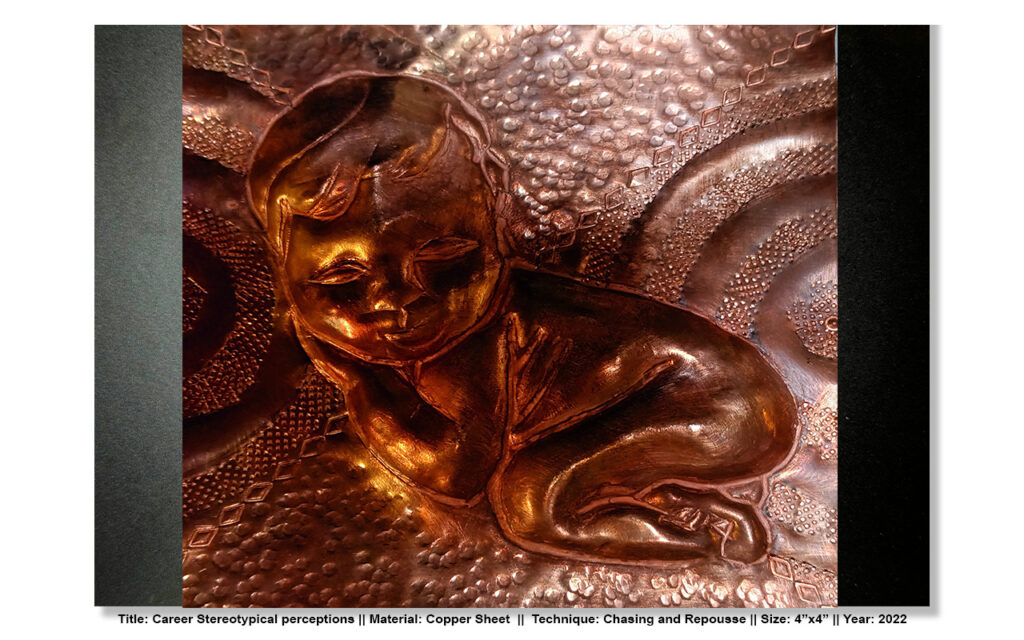 Godshand Owusu-Appiah, Cowrie Heads, 2024, Brass Sheet, Rusty Scraps, Steel Pipes, Perforated Steel Sheet, and Raffia Grass
Godshand Owusu-Appiah, Cowrie Heads, 2024, Brass Sheet, Rusty Scraps, Steel Pipes, Perforated Steel Sheet, and Raffia Grass
For artists who want to gain international experience, how would you describe the Ghanaian art industry? How was your experience studying fine art in Ghana as compared to the United States?
For artists seeking international experience, I would like to say the Ghanaian art industry is still in its growing stage and will be a good place to learn the traditional way of making art. It is the best place to learn how our ancestors created and also a place for exploring the basics of your artistic innovation.
Per my own observation, the art markets and galleries are gradually becoming more dynamic in aspects like cultural festivals, industrial art, and workshops. There are many opportunities for artists to immerse themselves in Ghana’s vibrant creative community.
Studying fine art in Ghana presents a unique and enriching experience compared to the United States because almost everything is executed through hands-on craftsmanship. People from far and near are drawn to our unconventional way of making art rooted in traditional techniques and cultural heritage. While pursuing my undergraduate B.A. in Industrial Art at Kwame Nkrumah University of Science and Technology (Knust), I had the opportunity to work closely with local lost wax casting artisans of Krofrom and gained valuable insights into Indigenous artistic practices.
On the other hand, studying fine art in the United States offers access to a vast array of resources, institutions, and contemporary art movements. My first years in America were like a baby learning how to walk again all because things were more advanced here and my traditional lessons from Ghana were not going to thrive. So, I had to learn and unlearn certain things.
I would like to say that American art education is good ground for experimentation because you are free to dare yourself to dream; and not just dream, but have great support from the advanced art industry.
Looking at both sides, I would like to say Ghana and the United States have offered me unique opportunities and have more for artists who want to expand their skills, perspectives, and networks on an international scale. In conclusion, this artistic journey has given me invaluable experiences and has inspired artistic growth and development.
What’s next for you and your artistry? What opportunities are you seeking and where do you see your creativity taking you?
I see myself as one of the forces championing the cause for balanced values in our quest for technological advancement. I want people to create with the future of humanity and culture in mind rather than creating technology that pretends to help but actually kicks humanity out of its capabilities and identity.
I believe my creativity is taking me to the unknown, but one thing I know is that I am going to be a force to reckon with in the creative industries.
As an artist who started off with a reserved personality in fear of making mistakes while trying to create new things, I would like to build a house for experimentation and research in Ghana that will encourage the young ones to free themselves from these feelings while daring themselves to dream.